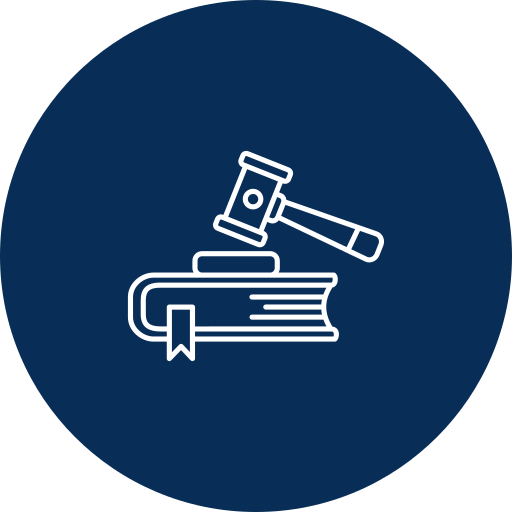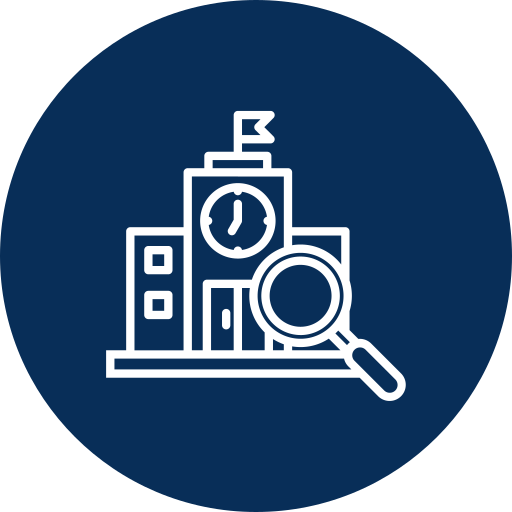Facilities and Administrative (F&A) Guidance
The University of Maine’s (UMaine) policy is to request and recover full Facilities and Administrative (“F&A”, “indirect”, or “overhead”) costs, whenever possible. UMaine will apply the full F&A rate(s) based on our federally negotiated F&A Rate Agreement on all proposals unless the prime sponsor has a published policy limiting or disallowing F&A costs. The full F&A agreement rate will be used regardless of whether UMaine is the primary applicant or subrecipient. UMaine’s subrecipients will be subject to the same F&A rate conditions that pertain to the overall UMaine project.
Jump to
What are F&A costs?
Facilities and Administrative (“F&A”, “indirect”, or “overhead”) costs are those costs associated with providing and maintaining the infrastructure that supports the research enterprise and which cannot be easily identified with a specific project. F&A costs are classified into two broad categories: “Facilities” and “Administration.” “Facilities” include libraries, buildings, grounds and buildings upkeep, etc. “Administration” is defined as general administration and general expenses such as the director’s office, accounting, personnel and all other types of expenditures not listed specifically under one of the subcategories of “Facilities”.
Why are F&A Costs Necessary?
Full cost recovery is necessary to support the University’s physical and administrative capacity to perform research. When indirect costs are not fully recovered, maintaining the University’s research capabilities and infrastructure is compromised. All sponsored agreements should share the burden of the cost of sponsored projects.
How Are F&A Costs Established?
F&A rates for proposals to agencies of the Federal government are set forth in the agreement between the University of Maine System (UMS) and the U.S. Department of Health and Human Services.
Basic Principles
Application of F&A Rates to Sponsored Activities
Principal Investigators (PIs) and campus administrators are responsible for submitting proposals that provide for full indirect cost recovery unless an exception is granted by a University official with the authority to do so, or the prime sponsor has a published policy limiting or disallowing F&A costs. Every effort should be made to recover all costs of extramurally- funded projects by applying an appropriate federally-negotiated rate.
To determine the applicable F&A rate for a specific project the following factors must be considered, which are described in more detail below: 1) the project type (research, instruction, or other sponsored activity; 2) whether the project is on-campus or off-campus; and 3) the funding source.
Project Type
Organized Research & Development (R&D)
Organized Research is research and development (R&D) activities of an institution that are separately budgeted and accounted for, including federally sponsored R&D, federally supported research training activities that occur in conjunction with, and in the same facilities as, the federally funded R&D activities, and university research and development that is supported by institutional funds (2 CFR § 200 Appendix III.1.b). “Research” is defined as a systematic study directed toward fuller scientific knowledge or understanding of the subject studied. “Development” is the systematic use of knowledge and understanding gained from research directed toward the production of useful materials, devices, systems, or methods, including design and development of prototypes and processes.
R&D activities include the following subcategories:
Additionally, the training of individuals in research techniques (e.g. externally-funded research training grants) that occur in the same facilities in which R&D is conducted is categorized as Research (rather than Instruction). Characteristics of R&D include systematic investigation; contributions to generalized knowledge; supporting, refining or refuting other research studies; production of research outcomes; intent to publish or disseminate results, etc. R&D varies greatly by field.
The following are examples of sponsored research projects:
Instructional
Instruction means the teaching and training activities of an institution financed by federal, state and private agencies and organizations. Except for research training as described above, this term includes all teaching and training activities, whether they are offered for credits toward a degree or certificate or on a non-credit basis, and whether they are offered through regular academic departments or separate divisions, such as a summer school division or an extension division. It includes activities that are part of the University’s instruction program to communicate educational content for-credit and not-for-credit courses (2 CFR § 200 Appendix III.1.a).
Examples include:
Other Sponsored Activities
Other Sponsored Activities are programs and projects financed by federal, state and private agencies and organizations which involve the performance of work other than instruction and organized research (2 CFR 200 Appendix III.1.c). Other Sponsored Activities can encompass many areas including Public Service, Academic Support, Student Services, Institutional Support and Scholarships and Fellowships.
Examples include:
Public Service is one of the more common activity types that generally falls under Other Sponsored Activities. It is characterized as the delivery of professional (non-instructional) services to individuals and groups external to the University.
Examples of public service include:
When distinguishing between Public Service and Research and Development, consider if the PI would conduct the project or work without an evaluation of outcomes or any academic recognition for the project such as publication of results and/or presentation of results at an academic meeting, then the project would be categorized as Public Service.
Another relatively common activity type that falls within the scope of Other Sponsored Activities is Academic Support. This category includes costs which provide support services to UMaine’s primary programs of instruction, research and public service, such as the following:
Scholarships and Fellowships are included as Other Sponsored Activities when the award does not require service to the institution as consideration, nor require the student to repay the amount to the funding source. This category also includes trainee stipends, prizes, and awards. Any student awards made in exchange for services to the institution (work-study programs, graduate/teaching assistantships) are excluded from Other Sponsored Activities and are instead recorded as expenses of the department to which the service is rendered.
Off-Campus and On-Campus Rates: Use and Application
UMaine’s negotiated F&A rate agreement recognizes that federally funded research, instruction, and service activities may occur either on-campus or off-campus or a combination of locations, and that the University’s entitlement to recovery of overhead costs varies depending on where the majority of the funded activities take place. The following definitions should be used to assure accurate application of off-campus F&A rates to federally funded projects, including subawards made to UMaine by prime recipients of federal grants, contracts, and cooperative agreements.
Off-Campus activity is defined as instruction, research, or other sponsored activity that is conducted in space not owned or directly maintained by the University and not otherwise paid for by the University from University funds. For space used for off-campus sponsored activity, an external source (typically, a research sponsor) provides funding, either paying directly for space or reimbursing the University for its costs in renting or leasing the space, or otherwise directly providing space for research at no charge to the University.
There is a significant difference between the rates for on-campus and off-campus activities. This differential represents the overhead costs of campus facilities, equipment, maintenance, utilities, communications and IT systems, and library operations that are available to the faculty investigator/project director and may be utilized in the conduct of the sponsored project.
The off-campus rates may be applied for federally sponsored grant, contract, or cooperative agreement activities when the project activities occur in facilities not owned or maintained by UMaine or when rent for those facilities is treated as a direct cost in the project budget and reimbursed by the sponsor or provided by the sponsor at no charge. Additionally, the off-campus rate only applies if more than 50% of the project activities are performed in or out of such off-campus facilities. If 50% or less of the project activities is performed in such rented facilities, the on-campus rate prevails.
The off-campus rate will not be applied when a principal investigator (PI) conducts his/her project off campus from a domestic residence either for convenience or when University facilities are unavailable (such as during a pandemic or other similar natural or man-made events.) The reason the on-campus rate must be used is that the research operating costs incurred by the campus continue to apply even when activities are off campus and/or project personnel are working from home. These costs include PI and project staff office and research space; permanent infrastructure depreciation; and salaries, health insurance and other benefits for research administration staff, department finance support, and all the effort of other UMaine employees who help execute and administer sponsored projects without being directly billed to a grant/contract.
Activities that do NOT constitute the use of the off-campus rate:
Because the Federal government does not provide detailed guidance on how to determine the portion of project activities being conducted off-campus, determining the applicable F&A rate is not an exact science. In its review to determine if the >50% threshold is met for off-campus designation, ORA will take into consideration where project personnel effort will be expended, where expenditures will be incurred, the facilities rental payment in comparison to total direct costs of the project, the duration of the rental agreement in relation to the project period, whether project personnel have assigned space on-campus, with access to library and research facilities, while work is performed in the rented facility, and other pertinent factors. Federal intent of an off-campus rate and ability of the rate decision to withstand audit will also be considered.
If the PI/PD wishes to make a case for a lower F&A rate based on project location, he/she should clearly explain the nature, location, and duration of the off-campus work and its proportion of the total project. Details of ownership to any off-campus facilities to be utilized and rental or use agreements for those facilities should also be included. (Note that hotel sleeping rooms and rented residential space when an individual is in travel status are not considered off-campus facilities.)
Use and Application of the On-Campus Rate for Off-Campus Facilities Owned and Maintained by the UMaine
The on-campus rate would apply to the following University of Maine facilities:
Application of F&A Rates to Specific Funding Sources
Although F&A rates are federally negotiated, UMaine applies these rates to all sponsored activity, regardless of sponsor type. Thus, the appropriate federally negotiated F&A rate should be applied to all sponsored projects based on performance location unless the sponsor has a published policy that limits F&A recovery (e.g., the 8% training limit applied by some agencies). In particular, full F&A must be included in research proposals for business and industry sponsors. Fixed price agreements with these business and industry sponsors that are based on fully burdened costs may be particularly appropriate. Researchers are strongly encouraged to consult with ORA prior to initiating or participating in any discussions of project cost and F&A application with sponsors to ensure appropriate project costing.
Exceptions
If the UMS and a sponsoring agency have entered into a master agreement that allows for recovery of less than full F&A costs, include the cooperative agreement number from which the task order or work order is to be written within the proposal. All conditions of the Master Agreement must be met in order to use the F&A associated with that agreement.
Copies of the Master Agreements are available upon request. Please contact ORA for additional details by emailing ora@maine.edu.
F&A Waiver Requests
Requests to waive any or all of the applicable F&A or use of the off-campus F&A rate for projects that do not meet the federal definition of “off-campus” in UMaine’s F&A rate agreement will not be approved by ORA. Any reduction in the applicable F&A rate requires advanced approval by the Vice President for Research and Dean of the Graduate School. This approval must be granted within 15 business days of the submission date.
Additional Considerations
Continuation Proposals
All current awarded projects will continue to have the F&A rate applied under which the award was made. This rate will be used until the award expires. This includes non-competing continuation requests when the continuation year for which you are requesting funds was awarded in the original award document.
Example: If the award is from January 1, 2020 through December 31, 2022 at a rate of 46% MTDC, the 46% MTDC will be used for the life of the award.
Supplemental Requests
Before submitting a request for supplemental funding consult with ORA regarding the F&A rate.
Subrecipient Budgets
When UMaine is budgeted as a subrecipient under another entity’s proposal, the F&A rate used should be based upon the project type of the prime recipient’s proposal (research, instruction, or other sponsored activity).
Example: UMaine is a subrecipient under a research proposal the University of New Hampshire is submitting to the U.S. Department of Agriculture. UMaine’s scope of work involves outreach, which could be interpreted as other sponsored activity when considering the project type. Which indirect cost rate would apply to the UMaine budget? The research rate would apply, because the prime recipient’s proposal is classified as research and all components of the proposal would fall under the same project type for compliance and reporting purposes.
In this example, PIs can request a waiver of the portion of indirect costs in excess of the other sponsored activity, which requires advanced approval by the Vice President for Research and Dean of the Graduate School. This approval must be granted within 15 business days of the submission date.
Failure to Adhere to F&A Principles
Failure to adhere to the principles and processes in this guidance may result in the adjustment of budgets or the use of departmental funds to ensure the appropriate F&A costs are collected.








